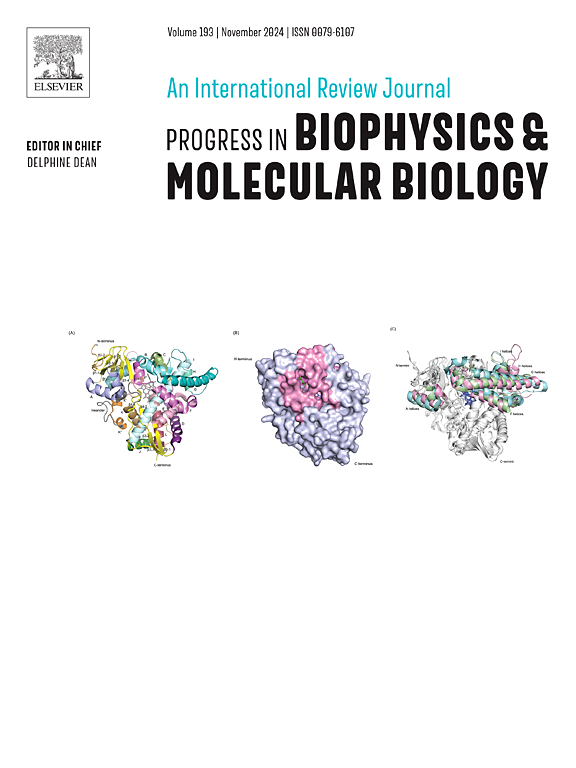Delineation and functions of HCN channels in neurons
IF 4.5
3区 生物学
Q2 BIOCHEMISTRY & MOLECULAR BIOLOGY
Progress in Biophysics & Molecular Biology
Pub Date : 2025-09-13
DOI:10.1016/j.pbiomolbio.2025.09.002
引用次数: 0
Abstract
The observation of non-linear current-voltage relationships of membrane potential responses in neurons led to the discovery of hyperpolarization-induced membrane conductance. The main underlying hallmark of this conductance was the presence of sag – spontaneous depolarization of membrane potential during constant hyperpolarization in current-clamp mode. Gradually, the presence of underling hyperpolarization-activated cyclic nucleotide-gated non-selective cation channels (HCN, Ih, or If, where f is for funny) was established. The earliest delineation of HCN-mediated sag in the hippocampus was documented by Purpura, Prelevic, and Santini with a short communication in 1968. The study was performed using classical electrophysiology by impaling the perikaryon of hippocampal neurons, but the outcomes are as insightful as with the patch-clamp technique, and the quality of traces exceeds some of the recent recordings. However, the latter authors were not convinced that the sag phenomenon could play a role under physiological conditions. It is logical since a depolarization and linked excitability are frequently observed in vivo, but not a hyperpolarization. At least a sudden, sharp hyperpolarization does not occur in the CNS. Besides, in order to activate the HCN channels, the amplitude and duration of hyperpolarization should be significant and sufficient. Nonetheless, those with skepticism conveyed pioneer observations were pivotal, since the presence of sag – activation of HCN channels – may also play a role in autism and epilepsy.
神经元中HCN通道的描绘和功能。
通过观察神经元膜电位响应的非线性电流-电压关系,发现了超极化诱导的膜电导。这种电导率的主要潜在标志是在电流钳模式下恒定超极化期间膜电位自发去极化的存在。逐渐地,超极化激活的环核苷酸门控非选择性阳离子通道(HCN, Ih或If,其中f是搞笑的)的存在被确立。1968年,Purpura、Prelevic和Santini通过简短的交流记录了hcn介导的海马凹陷的最早描述。这项研究是使用经典的电生理学方法,通过刺穿海马神经元的核周,但结果与膜片钳技术一样深刻,而且痕迹的质量超过了最近的一些记录。然而,后者的作者不相信下垂现象可以在生理条件下发挥作用。这是合乎逻辑的,因为在体内经常观察到去极化和相关的兴奋性,但没有超极化。至少在中枢神经系统中不会出现突然的、尖锐的超极化。此外,为了激活HCN通道,超极化的幅度和持续时间必须显著和充分。尽管如此,那些持怀疑态度的人传达的先锋观察是关键的,因为凹陷的存在-激活HCN通道-也可能在自闭症和癫痫中发挥作用。
本文章由计算机程序翻译,如有差异,请以英文原文为准。
求助全文
约1分钟内获得全文
求助全文
来源期刊

Progress in Biophysics & Molecular Biology
生物-生化与分子生物学
CiteScore
8.60
自引率
7.90%
发文量
85
审稿时长
85 days
期刊介绍:
Progress in Biophysics & Molecular Biology is an international review journal and covers the ground between the physical and biological sciences since its launch in 1950. It indicates to the physicist the great variety of unsolved problems awaiting attention in biology and medicine. The biologist and biochemist will find that this journal presents new and stimulating ideas and novel approaches to studying and influencing structural and functional properties of the living organism. This journal will be of particular interest to biophysicists, biologists, biochemists, cell physiologists, systems biologists, and molecular biologists.
 求助内容:
求助内容: 应助结果提醒方式:
应助结果提醒方式:


